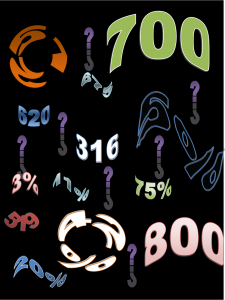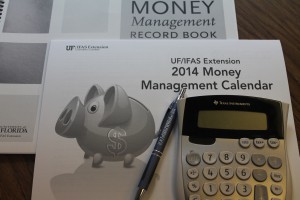by Dorothy C. Lee | Dec 9, 2014
 Christmas is a joyous season. It’s a time to remember friends and neighbors with small tokens of your love and appreciation.
Christmas is a joyous season. It’s a time to remember friends and neighbors with small tokens of your love and appreciation.
Every holiday season is magical, but it also can be a perplexing time. How do you choose gifts for your friends and loved ones that are unique and sure to be cherished?
Remember Christmas when you were young? How the simplest projects—stringing lights, hanging icicles, baking cookies, gathering pine cones, or making ornaments for the tree—filled the season with fun and excitement. Bring back that special magic with your own holiday projects. These holiday projects are gifts from the heart.
If you have spent many hours in past seasons trying to find the answer to the perplexing question of what to give, perhaps this year you can find the answer in your own kitchen. Flavorful gifts you can create in an evening or two at home might be just the solution. Most of us like to follow the pleasure of cooking with sharing the scrumptious results. So this holiday season, prepare some delicious food gifts for friends and relatives.
A jar of homemade jam or jelly conveys a welcome sign of friendship to neighbors or co-workers. Besides being fun to make and share, oven-baked goods, snacks, and other savory items are attractive and often cost less than those that are store-bought. This is a gift that comes from the heart without breaking the bank. For a holiday touch, add a pretty ribbon or a note from a square of wrapping paper.
Fresh from the oven, a batch of pumpkin muffins or a loaf of whole grain bread will send warm holiday greetings to friends. Decorated with raisins and nuts, gingerbread men will appeal to anyone who fancies the spicy flavors of cinnamon, ginger, and cloves. When invited to festive dinners, take along a basket filled with your own gift assortment of cookies packaged in inexpensive containers with recipes and a personalized message included. You will find these gifts easy to transport and the hostess is sure to appreciate the gesture.
Another gourmet goodies idea to consider is sharing a decorative jar or tin packed with flavorful popcorn or a nutritious trail mix. Top a decorative tray with herbed cheese rounds. Herbs offer a delicious alternative to salt. Herb seasoning mixes can be packaged in a decorative glass jar or bottle and tied with festive ribbon. Be sure to attach a label with instructions for serving and a recipe for making more.
When making these gourmet goodies, you might want to prepare an additional batch so you will have a last-minute gift on hand. The additional jar of jam or jelly can make a special gift for unexpected visitors. These gifts are seen as thoughtful and well-prepared when, in reality, they are a last-minute thought.
Start early and make lots of homemade goodies for the holidays. By planning your kitchen gifts early, you can shop for ingredients on sale, save decorative containers, and make food items in advance. So get a head start on holiday gifts from your kitchen. Happy Holidays!
by Kristin Jackson | Nov 22, 2014
 When you go to the doctor for a physical your health care provider probably routinely records four important numbers as a base line indicator of your health. Your vital signs consist of your blood pressure, breaths per minute, pulse and temperature. There are important numbers when it comes to your financial health as well: your credit score, debt to income ratio and your savings rate.
When you go to the doctor for a physical your health care provider probably routinely records four important numbers as a base line indicator of your health. Your vital signs consist of your blood pressure, breaths per minute, pulse and temperature. There are important numbers when it comes to your financial health as well: your credit score, debt to income ratio and your savings rate.
Your Credit Score
Your credit score is used most frequently by lenders to evaluate the risk involved when loaning you money. With your consent, your credit score could also be used when considering you for employment, insurance or housing. The normal range for a credit score used by the Fair Isaac Corporation is 300-850, but the exact scoring method is determined by your lender. You can get a free copy of your credit report (the information by which your score is determined) if you are ever denied credit or by visiting https://www.annualcreditreport.com.
Your Income to Debt Ratio
Your debt to income ratio looks at the percentage of income that goes toward paying all recurring debt payments such as credit cards, car loans or even child support. You can calculate this ratio yourself by adding up all of your debts and dividing it by your income. The National Association of Credit Unions suggest that a debt ratio of 36% or less is ideal for most people.
Savings Rate
Your savings rate is the amount of personal income expressed as a percentage that you save. Your savings rate is another figure you can calculate yourself (Total dollars saved per month / total disposable income = savings rate). In, “How Much Should We Spend,” UF IFAS Extension publication FCS5229 the recommended savings rate for your general savings, your emergency fund and miscellaneous expenses is 2-20% of your income.
If you knew your numbers and they are above par then give yourself a pat on the back if you need more information that is no problem either. Contact your UF/IFAS Extension Family Consumer Science Agent (FCS) can meet with you or your small group and explain to you in more detail what each of these numbers are, where to find these numbers and provide you with the resources you need to know where you stand. You wouldn’t ignore your vital stats, so don’t neglect financial stats either. For more information contact your UF IFAS Extension office by visiting http://solutionsforyourlife.ufl.edu/map/ or contact UF IFAS Jefferson County Extension Agent, Kristin Jackson at 850-342-0187 or jefferson@ifas.ufl.edu.
Resources:
National Institutes of Health. (2014). Vital signs Retrieve 27 August from http://www.nlm.nih.gov/medlineplus/ency/article/002341.htm
Turnner, J. (2006). How Much Should I Spend? Retrieved 27 August from http://goo.gl/d29h5r
Credit Union National Association Inc.(2014). Debt to Income Ratio. Retrieved 27 August from http://hffo.cuna.org/12433/article/316/html
by Kristin Jackson | Nov 21, 2014
 It won’t be long before you start to smell “holiday scents” and hear “holiday music” almost everywhere you go. These holiday smells and sounds are a marketing tactic. According to research conducted by Spangenberg, Gorhmann, and Sprott, when Christmas music is played in conjunction with an ambient Christmas scent being released, consumers have more favorable reactions to retailers, merchandise, and the overall shopping environment. Despite this retailing trick, consumers can avoid overspending by doing three things: make a budget, make a list, and stick to your plan.
It won’t be long before you start to smell “holiday scents” and hear “holiday music” almost everywhere you go. These holiday smells and sounds are a marketing tactic. According to research conducted by Spangenberg, Gorhmann, and Sprott, when Christmas music is played in conjunction with an ambient Christmas scent being released, consumers have more favorable reactions to retailers, merchandise, and the overall shopping environment. Despite this retailing trick, consumers can avoid overspending by doing three things: make a budget, make a list, and stick to your plan.
Make a budget
Ideally, budgeting is something that is done in advance and practiced year round. If you already have a budget in place, simply begin to plan how you will spend the money you have set aside for this holiday by category. If you do not have a budget, make a decision about how much money you are willing to spend this holiday season and stick to it. Some categories you may want to include in your holiday budget: Christmas cards, postage/shipping, gift wrapping expenses, decorating, travel expenses, and items for special meals/potlucks. For a printable holiday budget template, click here or visit the University of Maryland Extension website at http://goo.gl/5957ic.
Make a list
Once you have an idea of how much money you have for each budget category, get specific. Under each category, list individuals/groups to whom you want to give cards or gifts, decorative items you wish to purchase, places you will travel to, and food items you may want to prepare that are outside of your normal grocery list. Once you have identified the specifics based on your budget, decide on the total amount you can spend on each item.
Stick to your plan
Stick to your list and do not buy things you cannot afford. The idea seems simple enough, but, ultimately, this is where some will fall short. In 2013, a study conducted by Harris Interactive found that 57% of U.S. adults with children said they would be willing to take on debt in order to make their children happy for the holidays. When you buy gifts on credit or receive refund anticipation loans, title loans, or cash advances, you are taking on debt and may be buying items you cannot afford. Items purchased on credit that cannot be paid off before interest accrues end up costing more.
Tricks are for Halloween. This holiday season, don’t get fooled into unplanned purchases by the ambient smells and sounds retailers use to entice consumers. Shop smart by making a budget, making a list, and sticking to your plan.
References:
Spangenberg, Grohmann and Sprott. (2004). It’s beginning to smell (and sound) a lot like Christmas the interactive effects of ambient scent and music in a retail setting. Journal of Business Research 58:2005 (1583-1589).
University of Maryland Extension (2013). Stop Seasonal Stress with a Holiday Spending Budget. Retrieved 31 October 2014 from http://goo.gl/5957ic
Lexington Law. (2014). With the Holiday Season Nearing, Lexington Law Examines How Important Presents Are and How Much People Spend on Them. Retrieved 31 October 2014 from http://goo.gl/i3KDXm
by Elizabeth | Mar 31, 2014
 As you are clearing out clutter, sprucing up, and getting ready for summer, you also should start your financial spring cleaning by figuring out where you stand financially. Here are a few tips to help you get started:
As you are clearing out clutter, sprucing up, and getting ready for summer, you also should start your financial spring cleaning by figuring out where you stand financially. Here are a few tips to help you get started:
1. Get organized.
Build a personal financial filing system; get out your financial paperwork and file it in order of importance. Separate bills – that way, you can track them as they come in, reducing the chance of missed or late payments.
Use a plastic tote for a filing cabinet – these keep your files dry and are easy to carry from one room to the next should you need to.
2. Create a budget.
How much money do you have? Are you spending more than you earn? If you don’t have a spending record, start one. You can still get on with your financial spring cleaning today. If you haven’t been keeping a record, just make a deliberate effort to start now. Try to note all your spending for the next month, right down to the candy bar. Then, in a month’s time, you’ll be able to see where your money is going and, hopefully, see some areas where you can cut back.
3. Pay off Debt
Now, let’s discuss what most people agonize over, but is a very important subject: debt. If you have any debt beyond a mortgage, you should try to focus on paying off this debt as quickly as possible. It’s also important to try to negotiate your interest rates down with your credit card company if you can. Although this option may not be available to everyone, especially if your credit is not good, it’s worth trying.
If you are not successful, you can use these steps to reduce debt:
- Stop using credit; charging new items increases the balances on what you already owe.
- Do not open new lines of credit.
- Request a free copy of your credit report from www.annualcreditreport.com and honestly assess the problem. Understanding your situation helps when trying to resolve debt issues. Stop denying that you have a debt problem and work on it. You can analyze your debts using Powerpay®. This website gives you a personalized report and plan to reduce your debt based on your input.
- Break your debt load into manageable chunks; define your goal and focus on reducing manageable amounts.
For more information on financial education and tools to help you get out of debt; contact your local county Family & Consumer Sciences Agent.
by Kristin Jackson | Feb 28, 2014
Normal
0
false
false
false
EN-US
X-NONE
X-NONE
/* Style Definitions */
table.MsoNormalTable
{mso-style-name:”Table Normal”;
mso-tstyle-rowband-size:0;
mso-tstyle-colband-size:0;
mso-style-noshow:yes;
mso-style-priority:99;
mso-style-parent:””;
mso-padding-alt:0in 5.4pt 0in 5.4pt;
mso-para-margin-top:0in;
mso-para-margin-right:0in;
mso-para-margin-bottom:8.0pt;
mso-para-margin-left:0in;
line-height:107%;
mso-pagination:widow-orphan;
font-size:11.0pt;
font-family:”Calibri”,”sans-serif”;
mso-ascii-font-family:Calibri;
mso-ascii-theme-font:minor-latin;
mso-hansi-font-family:Calibri;
mso-hansi-theme-font:minor-latin;}
 Are you “liquid asset poor?” If a household experiences an unexpected financial strain, such as a job loss, illness, or other large expense, and does not have enough liquid assets to cover basic expenses for three months, they are considered liquid asset poor. Liquid assets consist of money held in checking or savings accounts. According to recent research conducted by the Corporation for Enterprise Development, approximately 49% of Floridians are considered liquid asset poor.
Are you “liquid asset poor?” If a household experiences an unexpected financial strain, such as a job loss, illness, or other large expense, and does not have enough liquid assets to cover basic expenses for three months, they are considered liquid asset poor. Liquid assets consist of money held in checking or savings accounts. According to recent research conducted by the Corporation for Enterprise Development, approximately 49% of Floridians are considered liquid asset poor.
Emergency funds focus on increasing liquid assets though savings. An emergency fund can allow households to adapt when unexpected financial strains occur. In the past, three to six months of income was considered to be a good emergency fund. In more recent times, the economy and unemployment have caused households to need much larger emergency funds. University of Florida professor, Dr. Michael Gutter, in “Money and Marriage: Saving for Future Use,” encourages families to consider the following factors:
- How much protection is provided by insurance
- Number of household incomes
- Household needs and fixed obligations
- Family financial support
- Retirement proximity
- Age of children
- Available credit
You can get an estimate of your household’s liquidity by completing the following steps:
1) Calculate the total amount of cash you have on hand and in your checking/savings accounts.
2) Develop a spending plan to allow you to estimate your monthly expenses.
(For help with developing a spending plan, check out Building a Spending Plan)
3) Enter your total cash and monthly expenses into the household liquidity formula:
Total Cash ÷ Monthly Expenses= Household Basic Liquidity
If the household basic liquidity is equal to or less than 1, this would be interpreted as having enough liquid resources to sustain your household’s current spending for only a month or less. If the household basic liquidity ratio is greater than one, that number is the number of months you would be able to live on your liquid assets based on your current spending. If you are not at your desired or expected number, take the pledge to start saving today at America Save$!
References:
Corporation for Enterprise Development. (2014). “Liquid Asset Poverty Rate”
Gutter, M. (2011). “Money and Marriage: Saving for Future Use”
Turner, J. (2001). “Show Me The Money: Lesson 5: Savings and Investments”
by Judy Corbus | Jan 27, 2014

Set your thermostat to 68 degrees or lower in the winter to reduce heating costs.
Winter definitely is here! Thankfully, we are not shoveling snow here in the Panhandle like our neighbors to the north, but our electric bills most likely have risen as the mercury has dropped. To save money on your winter heating bill, follow these tips:
- Set thermostats no higher than 68ºF when people are home.
- Lower the thermostat when you sleep or are away from home. The Energy.gov website states that if the setback period is 8 hours or longer, savings of as much as 1% for every degree setback can be achieved.
- Put on a sweater or warmer clothing for comfort and lower the thermostat even more. Layer clothing. Closed or tighter cuffs and collars help to retain body heat. An extra blanket or throw will keep you toasty with a lower thermostat setting.
- Use ceiling fans to circulate heated air. Most fans have a switch that allows users to adjust the direction of the fan blade movement. Set fans to move in a CLOCKWISE direction in winter. The upward air flow will move stagnant hot air off the ceiling area and down into the living space. This allows for a lower temperature setting on your heating unit without a reduction in the comfort level.
- To ensure the heat gets to where it is supposed to go, use mastic or foil-faced tape to seal the seams and any cracks in air handling ducts.
- Have the heating system serviced each year to ensure efficient operation.
- Check caulking and weather stripping around doors and windows. Replace as needed to reduce heat loss.
- Clean or replace heating system filters. Dirty filters reduce the efficiency of the heating system and waste valuable fuel. Check filters monthly and clean or replace as directed by the manufacturer.
- Do not place furniture and curtains over or around the heat registers or in front of cold air returns. These items will block the airflow.
- Never use the stove for additional heat. It is dangerous. Besides causing a fire hazard, fumes given off by combustion from gas appliances can result in increased carbon monoxide levels.
- On sunny days, open blinds, shades, and curtains, especially if your windows face south. At sunset, close the blinds, shades, and curtains to help keep heat in your home. This really makes a difference.
For more household energy saving tips, visit the UF/IFAS Energy Efficient Homes series.
Source: No to Low Cost Actions to Save Home Energy and Money
 Christmas is a joyous season. It’s a time to remember friends and neighbors with small tokens of your love and appreciation.
Christmas is a joyous season. It’s a time to remember friends and neighbors with small tokens of your love and appreciation.




